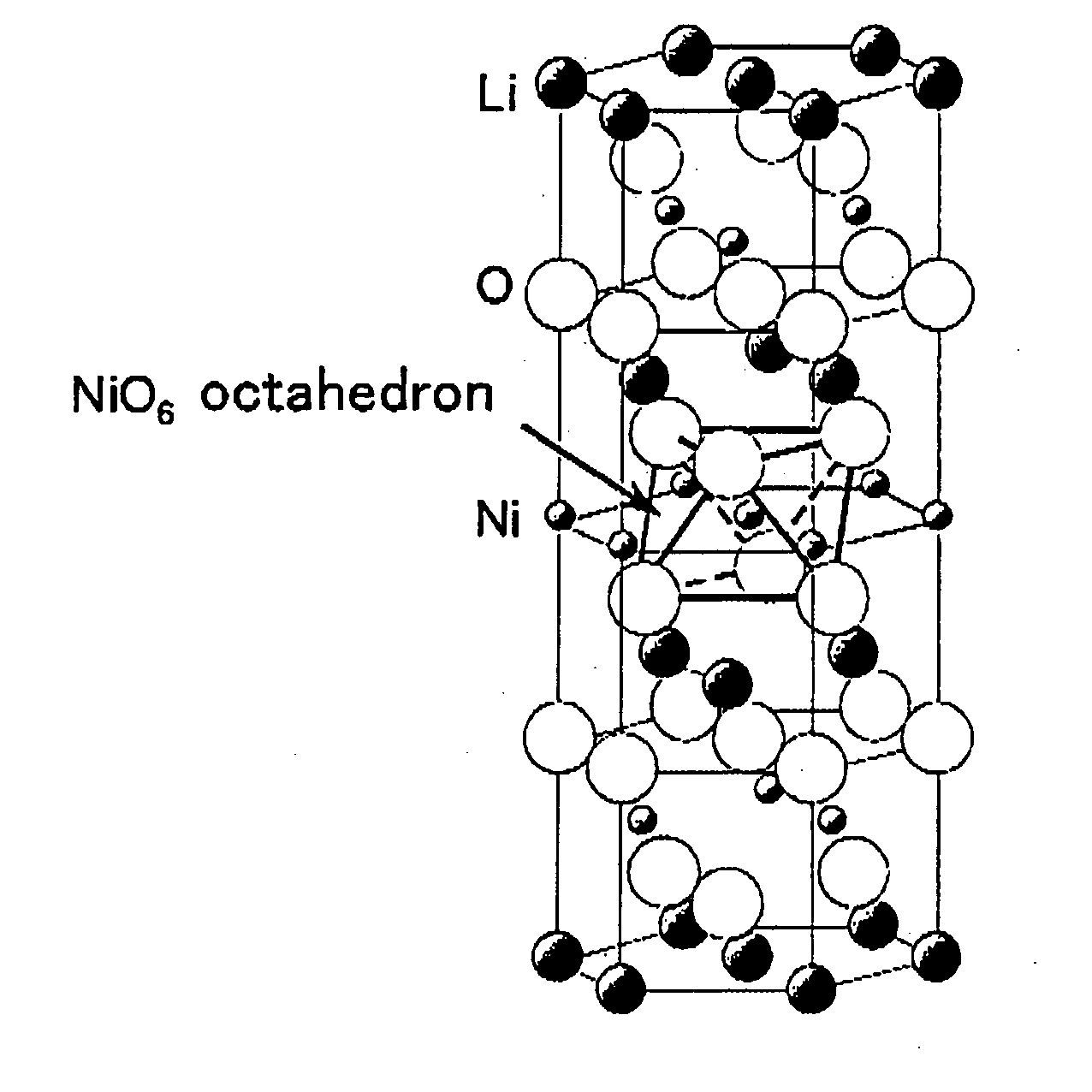Positive electrode active material for non-aqueous electrolyte secondary battery and manufacturing method thereof, and non-aqueous electrolyte secondary battery using same
- Summary
- Abstract
- Description
- Claims
- Application Information
AI Technical Summary
Benefits of technology
Problems solved by technology
Method used
Image
Examples
example 1
[0087] In the LiNiO2 complex oxide, LiNi0.82Co0.15Al0.03O2 was synthesized with 15 at % of Ni substituted by Co and 3 at % of Ni substituted by Al.
[0088] At first, sodium hydroxide and ammonia were supplied to an aqueous solution in which was dissolved nickel sulfate, cobalt sulfate, and aluminum sulfate, and by a coprecipitation method, a metal complex hydroxide in which nickel, cobalt and aluminum were present in the form of solid solution with a mole ratio of 82:15:3, was manufactured. The metal complex hydroxide comprised spherical secondary particles, in which a plurality of primary particles with diameters of 1 μm or less, were aggregated. A tap density of the obtained metal complex hydroxide was 1.72 g / cm3.
[0089] The metal complex hydroxide and a commercial lithium hydroxide monohydrate (manufactured by FMC Corporation) were weighed so that the ratio of the total number of moles of metals (Ni, Co, and Al) other than Li, and the number of moles of Li became 1:1. Then they we...
example 2
[0098] Other than the main bake temperature being 750° C., LiNi0.82Co0.15Al0.03O2 was synthesized by the same method as for example 1. Table 1 shows the processing conditions.
[0099] By an X-ray diffraction analysis of the obtained baked product it could be confirmed that this was a desirable positive electrode active material having a hexagonal layered structure. 95% or more of the particles of the obtained baked product had a particle diameter of 20 μm or less, and the mean particle diameter was approximately 8.36 μm. Moreover, the tap density of the obtained baked product was 2.34 g / cm3.
[0100] In the same manner as in example 1, Rietveld analysis, measurement of the mean crushing strength, measurement of the mean volume of pores having a diameter of 40 nm or less, and battery evaluation were performed. The results are shown in Table 2.
example 3
[0101] Other than the holding time at the provisional bake temperature (450° C.) being 1 hour, LiNi0.82Co0.15Al0.03O2 was synthesized by the same method as for example 2. Table 1 shows the processing conditions.
[0102] By an X-ray diffraction analysis of the obtained baked product it could be confirmed that this was a desirable positive electrode active material having a hexagonal layered structure. 95% or more of the particles of the obtained baked product had a particle diameter of 20 μm or less, and the mean particle diameter was 8.43 μm. Moreover, the tap density of the obtained baked product was 2.42 g / cm3.
[0103] In the same manner as in example 1, Rietveld analysis and measurement of the mean crushing strength, measurement of the mean volume of pores having a diameter of 40 nm or less, and battery evaluation were performed. The results are shown in Table 2.
PUM
 Login to View More
Login to View More Abstract
Description
Claims
Application Information
 Login to View More
Login to View More - R&D
- Intellectual Property
- Life Sciences
- Materials
- Tech Scout
- Unparalleled Data Quality
- Higher Quality Content
- 60% Fewer Hallucinations
Browse by: Latest US Patents, China's latest patents, Technical Efficacy Thesaurus, Application Domain, Technology Topic, Popular Technical Reports.
© 2025 PatSnap. All rights reserved.Legal|Privacy policy|Modern Slavery Act Transparency Statement|Sitemap|About US| Contact US: help@patsnap.com


